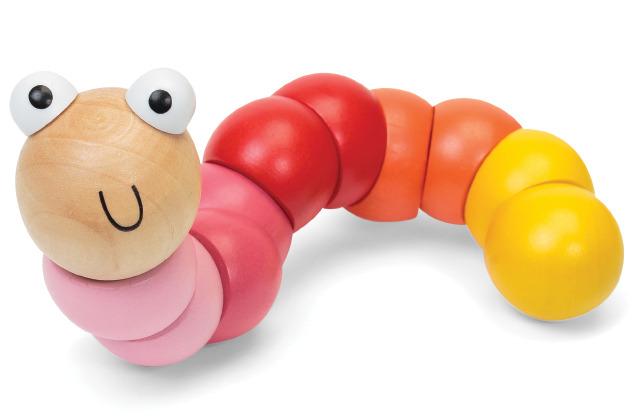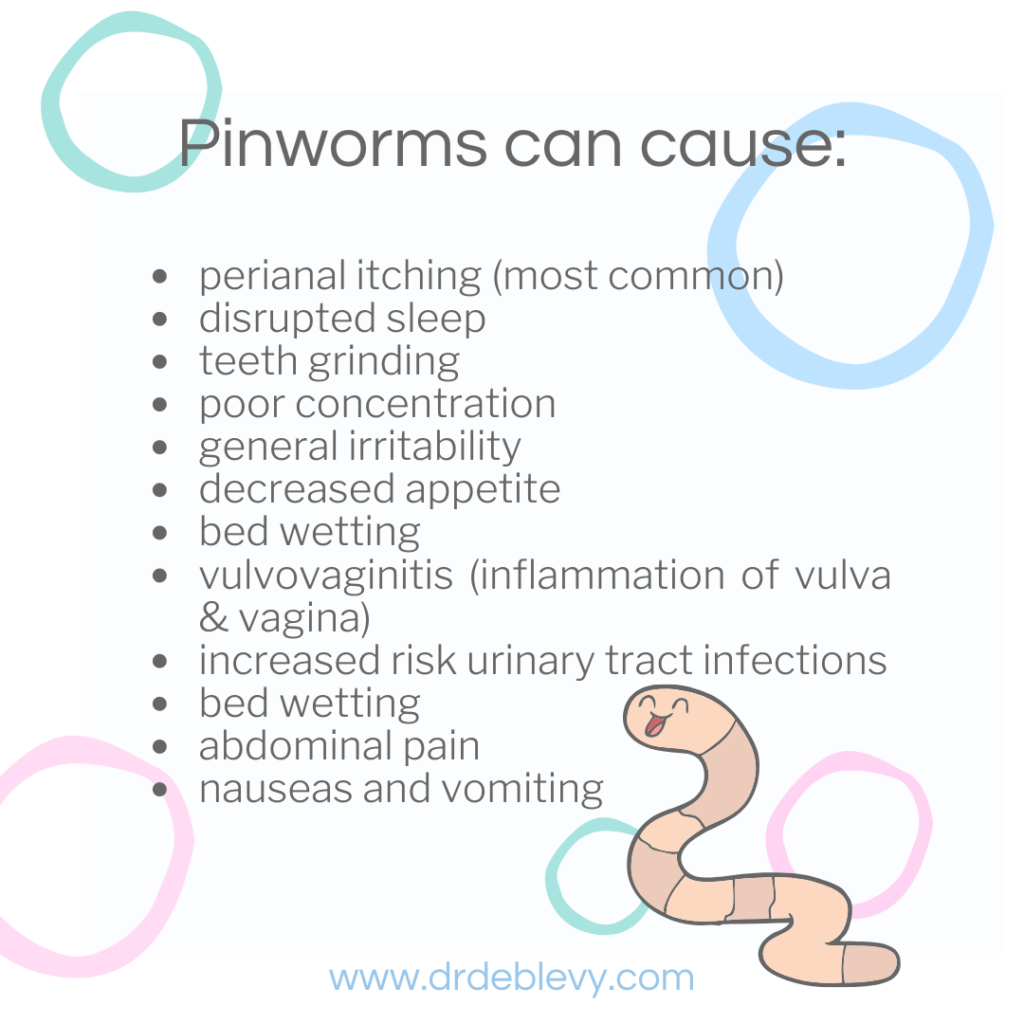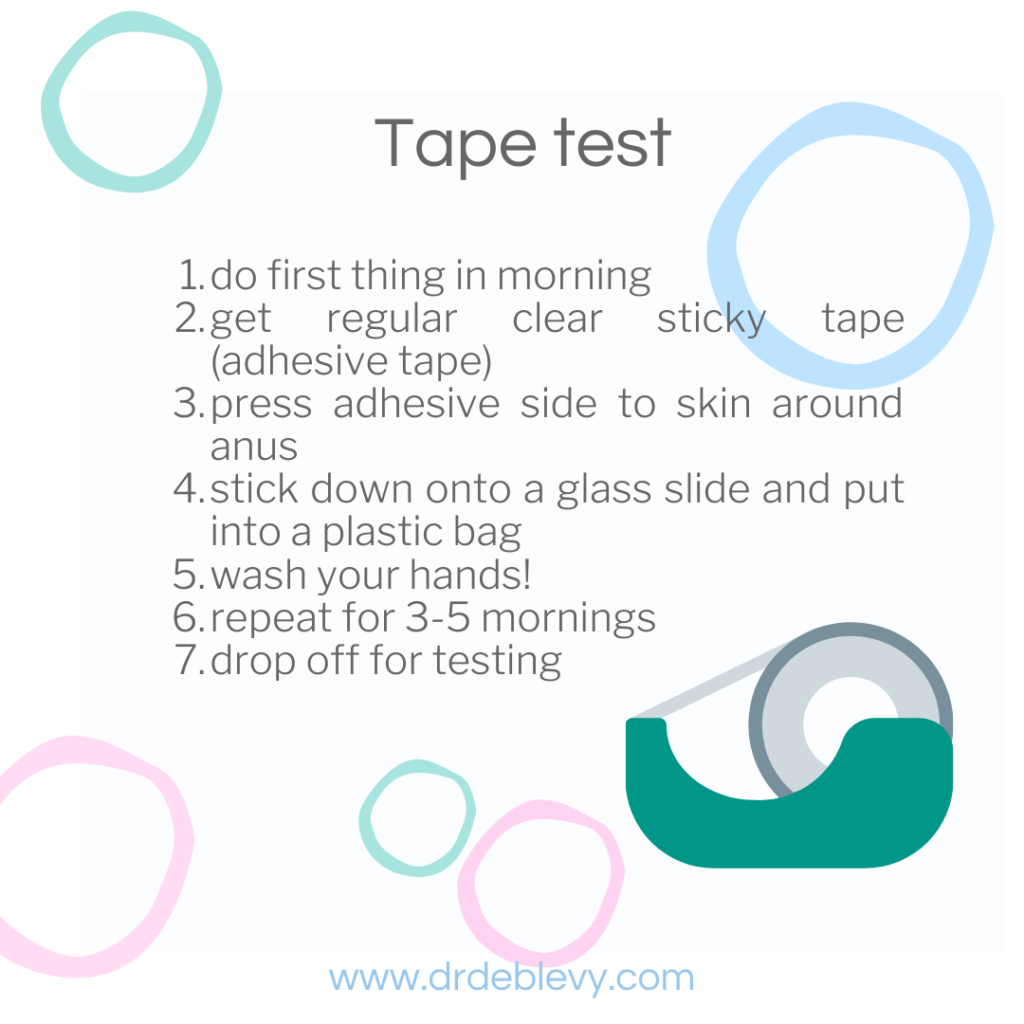
Does your child have pinworms?
Pinworms (Enterobius vermicularis) are tricky little things that are very common and can cause lots of problems. So it’s really important to know if your child has them and what to do about them.
What are pinworms?
Pinworms are a parasite that live inside humans and actually need us to survive. When I first learnt that they need us, it made me wonder if we need them? Well it turns out I wasn’t the only one to question this and there are many studies looking at how worms affect us. The research isn’t clear but worm infections (not just pinworm) seem to impact on how our immune system develops and functions. There have been suggested links to the hygiene hypothesis, microbiome diversity, inflammatory bowel disease, obesity and diabetes. Some studies even showing a benefit! But although it’s interesting, I’ve not been able to find enough evidence of overwhelming benefit so my recommendation is to treat worms.
So why am I focussing on pinworms and not other worms for this blog? Well, pinworms are the most common worm infection in children affecting up to 60% in some groups of preschool and school aged children. The reason it’s so common is because it’s highly contagious. It’s spread by contact and can even become airborne and inhaled.
How do you get them?
The classic route of spread is from direct contact. And this is explained by looking at the life cycle of a pinworm.
When an infected child has pinworm eggs on their hands (often under nails), they can spread it by sharing food, toys, touching door handles or really by touching any object. These eggs survive on surfaces for up to 2 weeks. So along comes another child who touches that surface and the eggs transfer onto his hands. The next time he eats or touches his mouth, in they go! Pretty disgusting, I know, but the eggs are then swallowed and they travel to the gut where they hatch and grow into worms that then start causing the trouble.
What are the symptoms?

Pinworms don’t usually cause much direct damage to the gut but they can certainly be responsible for a variety of symptoms. By far the most common symptom is an itchy bottom (perianal itching also known as pruritis ani). This happens when a mature female worm travels out your child’s bottom to lay their eggs in the skin at the anus. This usually happens at night and causes a lot of irritation and itching. And when your child scratches their bottom, the eggs transfer to their hands and the cycle of infecting others or reinfecting themselves continues. Revolting but ingenious really.
There are other symptoms that make me suspicious of pinworms (see above) although some, like abdominal pain, nausea & vomiting, are rather uncommon. Infestation can also become chronic, with pinworms even migrating outside of the gut to other organs. This often makes diagnosis difficult. I’ve seen children who had previously been to multiple specialists for various complaints that improved after I treated for worms.
How do you know if your child has pinworms?
Unfortunately it’s not possible to do a poo or blood test to confirm pinworms. The best way of diagnosing is actually looking for the worms or the eggs.
Inspection: Pinworms are tiny (1cm) white and thin and look like a piece of cotton, that moves. You should look very carefully at your child’s bottom, underwear and bed linen. It’s best to do this first thing in morning. Worms are rarely seen in the poo, but this is actually how we diagnosed our daughter’s episode.

Sticky tape test: This is the best way to diagnose it. You’re hoping to find the eggs. Unless there are lots clumped together though, you need a microscope to see them. If your doctor orders this they should supply glass slides or sometimes wooden tongue depressor sticks are used. Studies have shown it’s 90% sensitive (so will accurately diagnose pinworms 90% of the time) if done for 3 consecutive days and up to 99% sensitive if done for 5 days.
So as you can see, it can be difficult to diagnose, which means I often just treat when I clinically suspect it.
How to treat pinworm
Understanding the pinworm’s life cycle and how contagious they are, it’s important to be vigilant about treating. All of these steps should be followed to maximise eradication and to minimise risk of reinfection.
- everyone in the household should take the medicine recommended by your doctor (e.g. albendozle, mebendazole)
- wash all bed linen & soft toys, wipe down and clean all surfaces
- cut finger nails
- repeat all steps in 2 weeks
Your child’s symptoms should improve within a few days. The need to repeat treatment is because the medication only kills the worms not the eggs. And if you remember, eggs can last up to 2 weeks. So treating again after 2 weeks kills any worms that may have hatched after initial treatment.
Take home tips
Pinworms are very common and highly contagious.
They do not indicate poor hygiene.
They can cause many symptoms although an itchy bottom and disrupted sleep are the most common.
They can be difficult to diagnose
Treatment (if adhered to) is highly effective
I hope you’ve found this helpful. Please share with your friends and family 🙂
